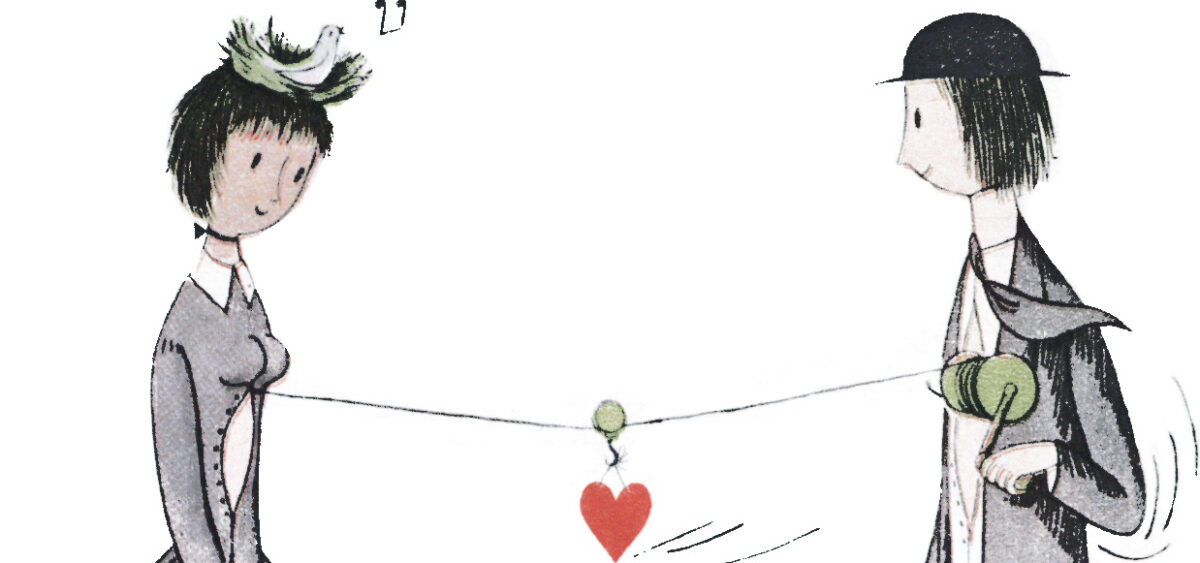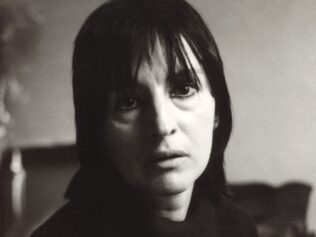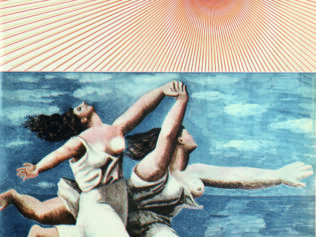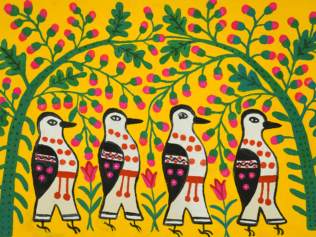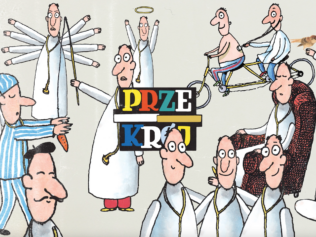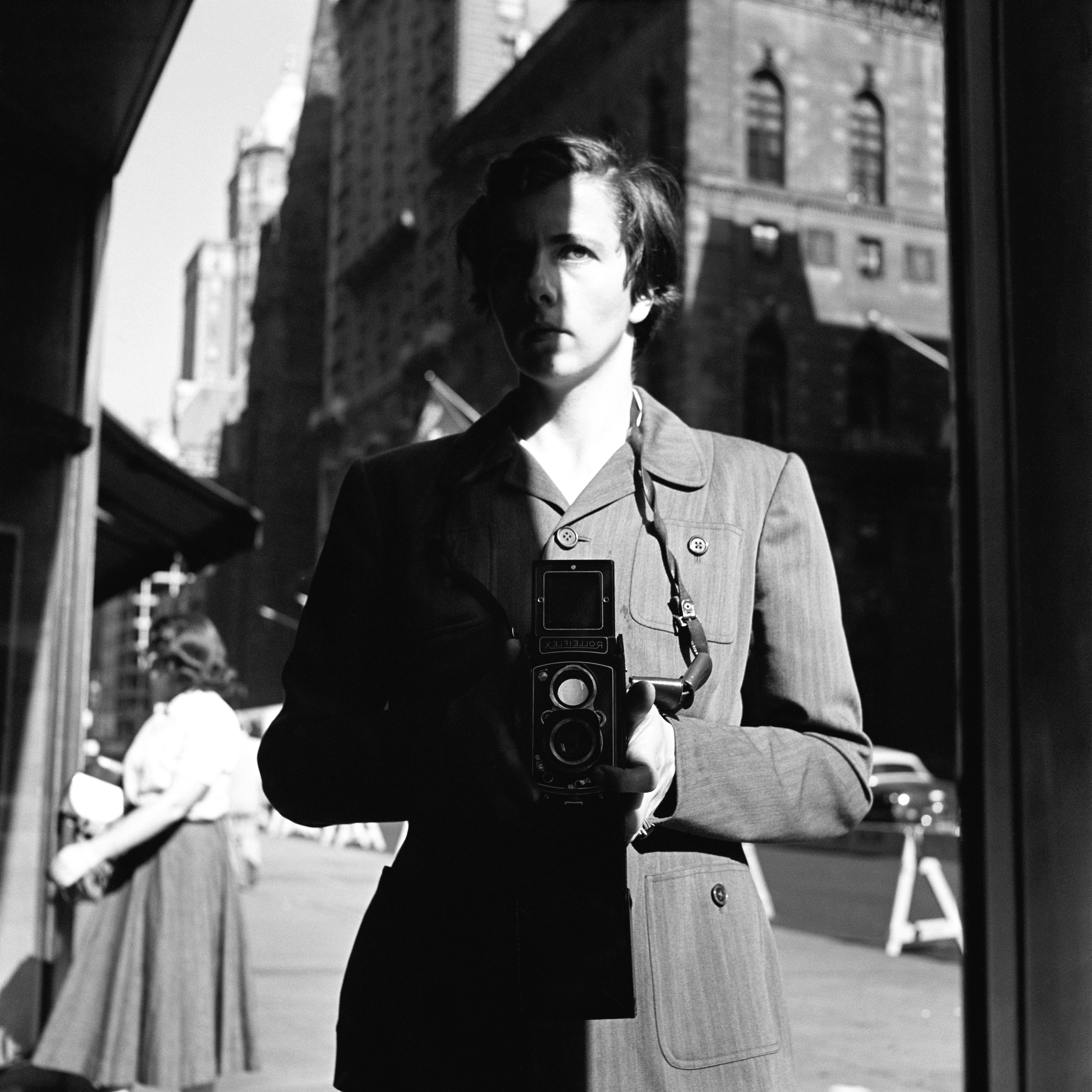
My unwavering enthusiasm for Raymond Peynet and his ‘lovers’ (Les Amoureux) dates back almost four decades.
It began with a small claret-coloured, cloth-bound tome published in 1958, which my parents received from some friends as their engagement gift. Years later, I discovered that originally it had also included a turquoise dust cover with a cut out, heart-shaped window in the centre. I mention this because, as it happens, during my childhood this little book was a kind of window through which I could admire the world of romance, slightly tinged with a shade of erotica.
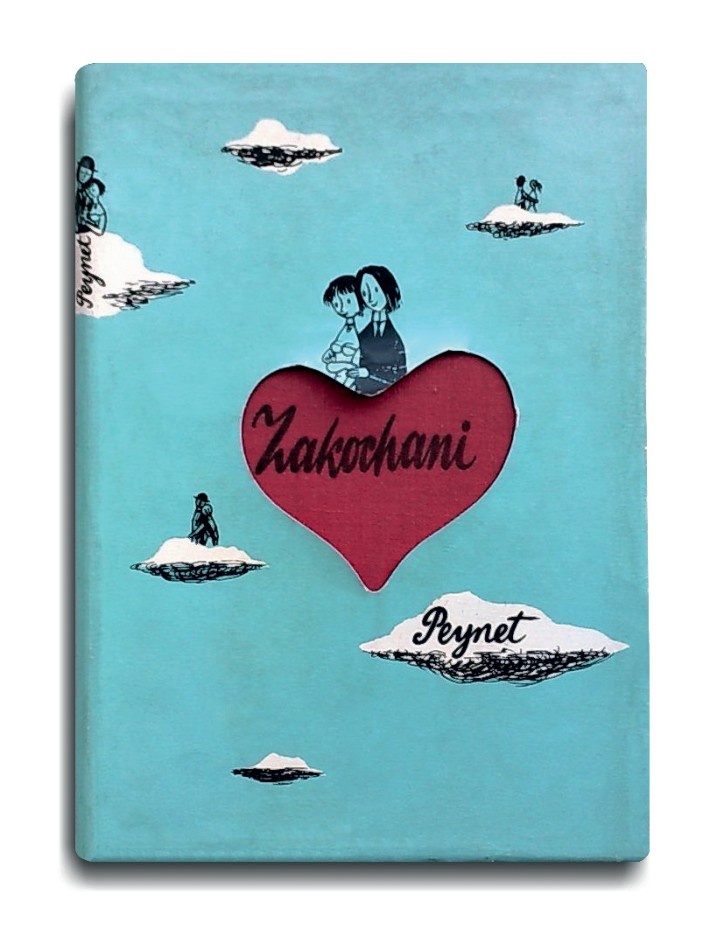
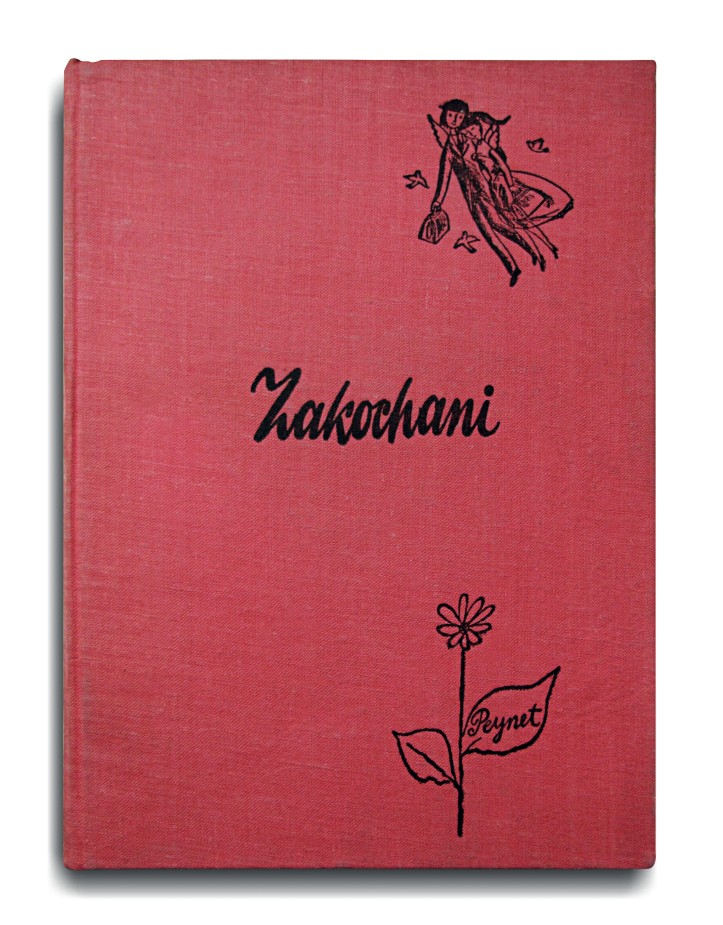
Even though I was still in short trousers, I was already fantasizing about passionate kisses. The rare glimpses of a derrière through a slip, perky apple-shaped titties, a shapely limb, and a stocking – although not as frequent as I’d like – were not only beautifully drawn, but have also shaped my sensitivity, and turned out to be essential to my later vision of love and sensuality.
A little later, I discovered Maja Berezowska – the lone, shiny, pink star on the firmament of Polish post-war erotica. For numerous reasons, I worship her in a very special way. To depict and praise sultry pleasure in the reality of real socialism was by no means easy or straightforward. Meanwhile, her works simply vibrate with a lustful will to live. The swollen form kisses lips, and the flexible fingers of the characters filling her work can still elicit wickedly sinful thoughts. While Peynet came first, that wasn’t the only reason why he remained the most important. In his drawings, even those set in winter scenery, spring always reigns supreme – the ultimate season of blooming hearts. His drawings emanate a kind of blissful warmth, carefree insouciance, and sentimentalism in the best sense of the word.
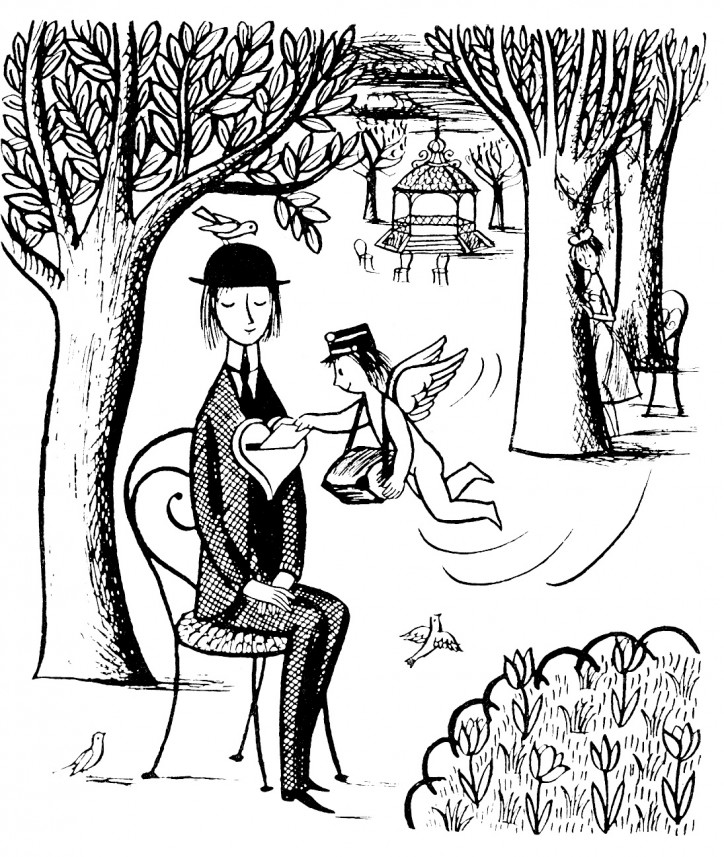
Peynet’s protagonists are a couple of eternal sweethearts – a poet and his delightful muse, both funny and moving, but never laughable or tragic. Him, in an old-fashioned suit and a bowler hat; her in a flared skirt with a ponytail or a pixie cut. Over the course of decades, they only change ever so slightly – she begins to wear a chignon, a miniskirt, and over-the-knee boots – but while their wardrobes change with the passing of time, their relationship remains unaffected. Theirs is a universal story about tender and affectionate love, faithful and fulfilled, pleased with itself, and pleasing, over and over again.
In the introduction to the Polish edition of Peynet, Tadeusz Pomianowski nicely exposes this aspect, as well as the strength of the seemingly trivial illustrations. To describe them, he uses the phrase “a series of playful erotica”. I quite like this phrase. I point this out, because the nuance is important here: ‘playful’ does not mean the same thing as ‘funny’ or ‘humorous’. This ‘playful erotica’ is absolutely delightful. This is charm in its pure form, which by no means deprives the drawings of their piquancy. Despite the fact that they would be considered today to be absolutely innocent, I recommend them – without hesitation – as a prelude to boudoir dalliances. Even tonight!
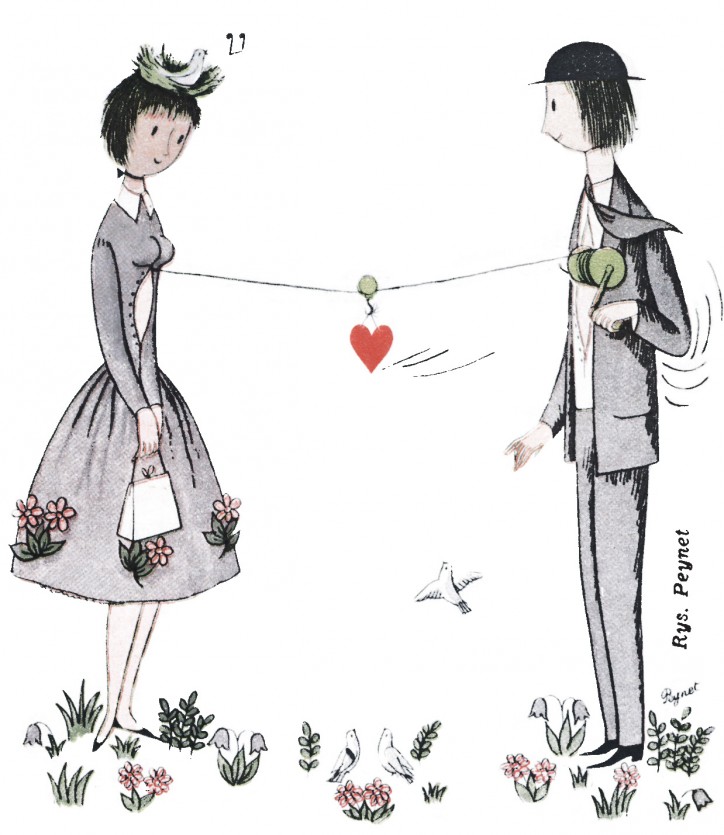
Peynet’s lovers have enjoyed a tremendous international career. In France, they remain a Valentine’s Day hit. Albums with their adventures have been published all over the world; the English editions have been recommended by, among others, the great Ronald Searle. In 1957, a dozen dolls depicting the couple were presented as the official diplomatic gift to Princess Anne. In the 1960s, Peynet began a collaboration with the porcelain giant Rosenthal, resulting in dozens of plates, vases, and other trinkets decorated with his drawings. The poet and his beloved also appeared on gold jewellery, crystal cognac glasses, and special edition bottles of champagne. There are two museums in France (Antibes and Brassac-les-Mines) and two in Japan (Karuizawa and Sakuto) dedicated to Peynet’s work.
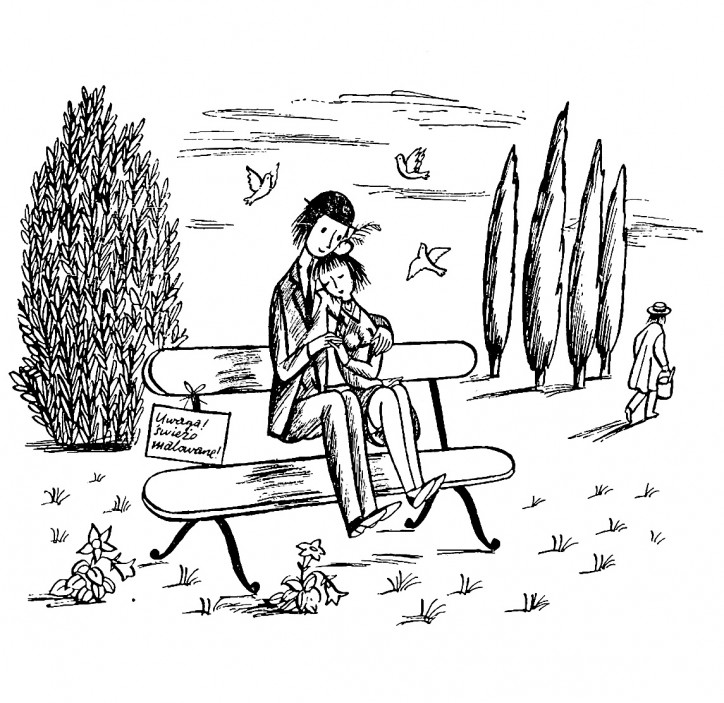
The latter does not particularly surprise me – the Japanese tend not to overlook such gems, and despite the local overproduction of kawaii, they have adopted both the Moomins and Cheburashka. In Warsaw’s Żoliborz district, in the ice-cream parlour on Baśniowa Street, you can see murals depicting the lovers. I get the impression that the girls working there have never heard of Peynet or his characters. I guess this is hardly surprising. They are very young, and presumably not interested in dusty vintage books. In any case, the lovers fit in perfectly, and I still hope that one day a charming damsel – wearing a velvet ribbon on her slender neck and cherries instead of earrings – will serve my portion of frozen liquorice.
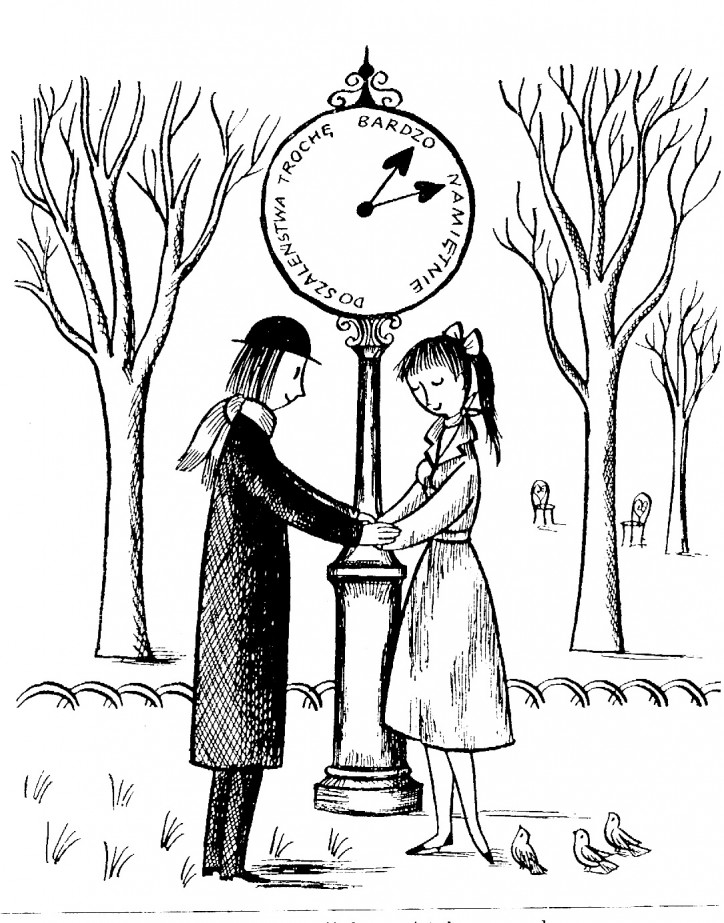
Peynet was comfortable enough to be able to devote a lot of time and attention to his work. He became successful in the early 1950s, and his life spanned almost the entire 20th century. Born in 1908, he died in 1999. He made his debut as a cartoonist in the English-langugae magazine Boulevardier (published in France in 1930), and later collaborated with titles such as Le Rire, France Dimanche and Ici Paris. Some of his first reprints appeared, by the way, in Poland in the 1930s. He spent his life in Paris and in his château in the south of France, near Nice, always with the same woman by his side – Mademoisille Denise Damour, considered to be the prototype of his heroine. As the years went by, Peynet’s line changed a little and his drawings became more detailed. This can be clearly seen in his drawings from the 1970s, and especially the colour lithographs. Personally, I am most attached to his early works. I am captivated by their simplicity.
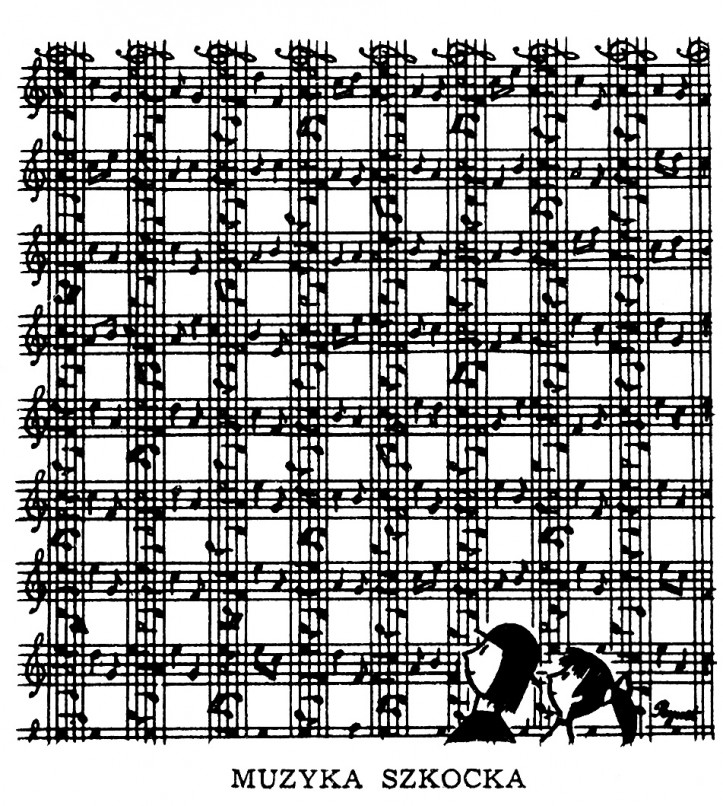
The lovers are often cited as the inspiration for Georges Brassens’ famous song, “Les amoureux des bancs publics”. For me, it is more important to know that Peynet began to draw the couple in 1942. In my book collection, I have a lovely copy of Princess de Cleves with an introduction by Jean Cocteau, published in London one year later. I am fascinated by how love can break through the darkness during the periods of mankind’s greatest humiliations. Although I am a sceptic and have a rather limited faith in my fellow human beings, I do believe in loving. I owe this faith, among other things, to the charming lyrical story depicted in the thousands of scenes that Raymond Peynet created across the near entirety of his long life.
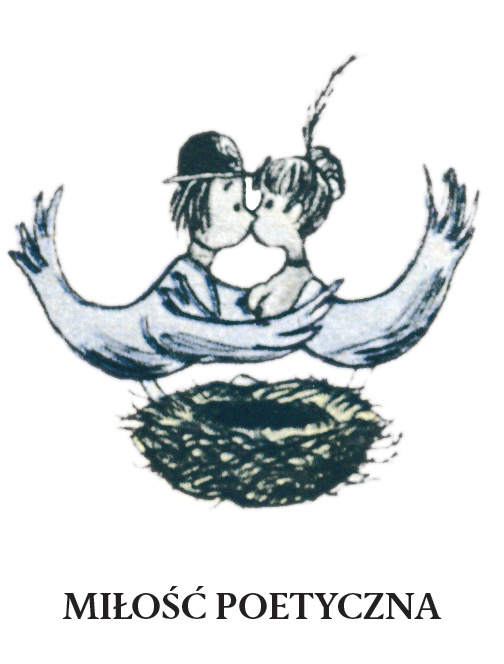
During the second or third year of university, I lent my copy of Les Amoureux to an older friend, an assistant in a painting studio. She returned it to me a few days later and, with a scornful pout, made a sarcastic comment on the author’s naivety. At that time I felt upset, but today I know that such naivety requires not only a deep serenity, but also great discipline. Because of this, it is so rare that – in my opinion – it is priceless.
Drawing poetry
Raymond Peynet appeared on the pages of “Przekrój”’s former incarnation several times. When the series ‘Peynet’s Different Kinds of Love’ was published, the editorial read: “One can compose poetry with the use of pens and ink, brushes and paint. The way to do it is to arrange all of the above on a table, lay out some paper, and call on Mr Raymond Peynet. Mr Peynet arrives, sits down, and begins to draw poetry.”


